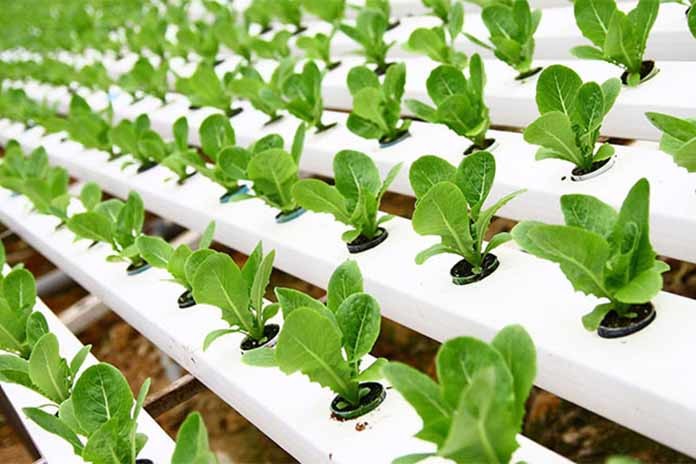
Hydroponic Gardening – We all have our quirks and pet-peeves. Like some of us want to garden but don’t like digging in the dirt. Others want to try gardening but don’t have much space. And then, there are some who want to garden right inside the comforts of their home. Well, we can all enjoy gardening with hassling for space or dirtying ourselves.
Moreover if you are a beginner, then you can try container gardening & if you are trying container gardening then you should know about container plants too.
Hydroponic gardening is an excellent way to grow plants in a soilless solution. And it is not complicated. In fact, even your child could do that. This is how you can grow a hydroponic garden. Firstly, get started with the system you will need. The roof gardens are also a great option to grow a hydroponic garden.
Contents
A hydroponic system
Hydroponic systems are readily available with commercial suppliers. These systems are sold as a kit; therefore, you get to choose the one that best fits your requirement.
Hydroponic nutrients
In this system, nutrients are basically hydroponic fertilizers that contain all the elements that a plant would normally draw from the soil. Stick to the powdered form of nutrients are they are more powerful and can be mixed with water.
An inert hydroponic medium
The medium acts a channel, which aerates and supports the plant’s root system. It also aids in channeling water and nutrients. Different mediums are required for different types of hydroponic systems.
Popular mediums include coconut fiber, coconut chips, perlite, sand, and vermiculite. Since these mediums are inert, they are very hard to break down. This is how they efficiently supply nutrients to the plant.
Also Read: Gardening is Good For Health.
A light source
For hydroponic systems, metal halide lights are very popular. Other types include LEDs, high out and compact fluorescents, and high-pressure sodium bulbs.
Water
As a water-based horticultural technique, hydroponic gardening requires a lot of water. And no, the roots won’t suffocate while grown underwater. In fact, it is recommended that you get air pumps to increase bubbles in the water system, which, in turn, will increase the supply of oxygen to the roots.
Plants
Almost any house plant can be grown using the hydroponic system. It could be any fruit, veggies, herbs or flowers. As a thumb rule, any plant with shallow roots is best suited to be grown using this system. Popular plants include lettuce, radishes, celery, tomatoes, strawberries, blueberries, grapes and herbs.
Growing a hydroponic garden
Create a dedicated area
A greenhouse or room for the garden can be installed anywhere for affordable prices. Plus, you choose from a variety of different plants. Plus if you love hanging garden then try these hanging planter to grow a garden.
Get the right environmental control system
Invest in basic items such as a temperature control unit, heating mats, light fixtures, exhaust fan, an aeration system, pearlite and marble for home hydroponics’ purpose.
Germinate the seeds
- Take some wet paper towels and put the seeds inside them.
- Fold them and place gently inside clear sealable bags.
- Leave the bag to rest in a dark and warm place, so that the seeds have enough time for germinating.
- Be patient, as the germination time may vary from one seed to another.
Seedling
Once seeds start germinating, an inch of stem pops out, which shows it has turned into a seedling. In case the seeds have frailer stems, punch small holes out of the moist paper towels and leave seedling inside them.
Doing so allows the leaves to emerge through. However, if the stems emerging out of the seeds are strong, just cover their roots with wet paper towel, while letting the stems straighten out and grow leaves. Seedling can help your hydroponic system grow better.
Create the hydroponic gardening solution
Mix water and the nutrient so that the strength reaches an average of 20-24 CF with pH ranging in between 5.5-6.5.
Move the plant into the permanent container
Once the seedlings are stronger and bigger, move them into the permanent container carrying the growing medium. For better hydroponic gardening, ensure that the roots are submerged in water.
Carefully control the chemical balance of the medium
Change water every few days and add nutrients every few weeks. Read the nutrients’ manual for the right time and duration.
Cross Pollination
Most plants in hydroponic garden self-pollinate. If cross-pollination is needed, simply keep the plant near an open window or somewhere outside.
Don’t allow the flowers to weigh down the stem
In the case of flowering plants, the chances are that the flowers may weigh the stem down causing it to crack. Therefore, provide them with external support stuck to the sides of the container to avoid such instances.
Harvesting
Like any other plants, you can harvest home hydroponics’ plants. Different plants have different harvest time.
So, start turning your garden dreams to reality with Hydroponic Gardening.
Also Read: Top 10 Indoor Gardening Tips You Must Try
5 Step Beginner’s Guide to Grow Indoor Vegetable Garden
